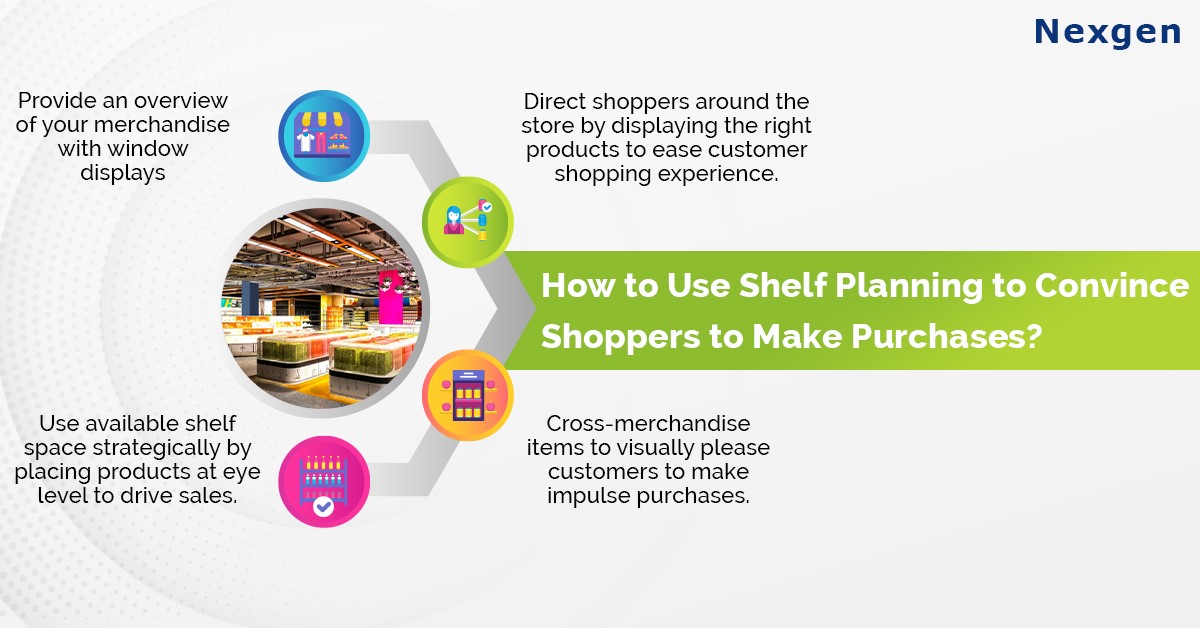Do your customers walk into your store and feel like an unseen force is guiding them in a specific direction? Your customer visited to buy groceries, and the store flow takes them past the sweet’s aisle. Suddenly, they search for snacks to go with afternoon tea or coffee. As your shopper walks out with more than what they intended to purchase, they will be more confused about how it happened.
It happened through the combination of shelf planning strategies that all retail stores use today. They display products and layout their store in a way to entice shoppers to purchase more. This can be achieved by using space planning solutions such as planogram software that make customers stay in stores for longer periods, increasing the likelihood of driving sales. Planograms let you plan the placement of items on your retail shelf to maximize sales and customer satisfaction. It helps retailers create a visual representation of an ideal store layout to boost sales. But how can planogram strategies influence shoppers to walk through and spend more time in-store? More importantly, how can retailers use them to encourage shoppers to buy more? Let us look at these shelf planning strategies to drive sales:

1. Make the most of your decompression zone: Your customers are aware that they will be making a conscious effort to think about the items on the shelf even before they enter your store. Which brands do they purchase, A or B? Do they require items that will make their lives easier right now, or will they wait to get them? Do they make that impulsive purchase while they are in line? There are countless questions. Knowing this, you can create a shopping experience that will reduce any needless anxiety, making your shoppers prepare for the shopping experience by letting their minds relax in the decompression zone. What makes a good decompression zone that might draw people to your store—and how can you create one? You can entice shoppers to cross the threshold and enter your store by adding aesthetically appealing displays. Having a few displays that show shoppers what to expect inside the store is not a bad idea. It is best to place displays out of the way so that people may enter or exit your store without being blocked.
2. Ensure your store is visually appealing & enjoyable to shop: Merchandising the right items is a crucial element to entice shoppers to purchase your items. Everything depends on the roles you assign to categories and the shelf space you have. For instance, you can use vertical or horizontal merchandising to present products in a display to ensure that all items are within the shopper’s line of sight and allows them to view items from all angles. You can use color blocking merchandising techniques to group products of similar colors. For example, you can use green or yellow colors for groceries to attract shoppers. Other than color blocking, using cross- merchandising techniques such as placing complementary products like tennis balls and rackets, or milk and cookies together can save your shoppers time and money.
3. Make use of your available shelf space wisely: You do have a limited amount of shelf space, that much is true. That is why it is important for you to make the best use of it. Yet how? Most retailers think placing products at eye level is the best idea. Considering that many retailers place their best-selling items here, that is unquestionably true. One rationale is that more customers will notice them, and the other is that "eye level is buy level." Then there are your end caps. These shelves are at the end of your aisle and are also called gondola ends. You can utilize them to entice customers into an aisle by offering discounts or incorporating technology to attract them. By employing such space planning strategies, you are providing customers with all the information they need to decide on shopping.
Overview of Nexgen POG
Nexgen POG is a robust and user-friendly cloud-based visual merchandising tool. It is designed for quick and efficient planogramming with minimal effort. Planogram in retail can be designed by easily dragging and dropping the products. The multi-device compatibility feature of POG allows you to obtain, share and edit planogram on any device, including your phone. It helps in designing store-specific planograms for increased product visibility and sales.
Get Your Free Trial Now!